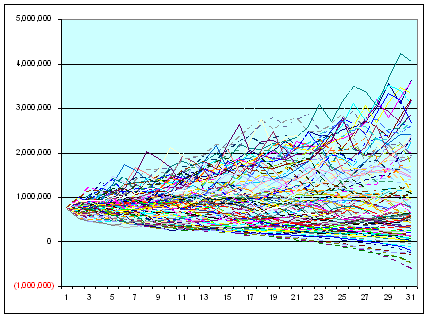REWahoo
Give me a museum and I'll fill it. (Picasso) Give
Maybe I'm missing something, but it appears to me Wade Pfau is putting out conflicting information about the safety of the 4% WR.
February 2014:Forget the 4% Withdrawal Rule
February 2014:Forget the 4% Withdrawal Rule
Now this in July 2014:Retirement: 2 different views on the 4% rule“The probability that a 4% withdrawal rate will work in the future is much lower,” he says. His new safe starting point: a 3% drawdown.
View #1: A histogram for historical outcomes
In this view, as 4% is the worst-case scenario from history, it can be reasonably viewed as a safe withdrawal rate for today's retirees.
Maybe I'm missing his point but in addition to being substantially different from what he said in February, the two views seem to be entirely supportive of each other. And his closing line only confuses me further:View #2: Adding retirement date market valuations to the picture
...a best guess about the sustainable withdrawal rate for someone retiring today is 4.2%....
Makes me question his credibility.Which view is most relevant is the issue plaguing today's retirees.
Last edited:


